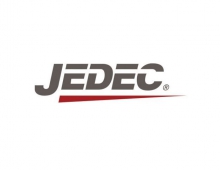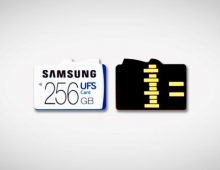
JEDEC Details Key Attributes of Upcoming Universal Flash Storage Standard
JEDEC Solid State Technology Association today announced
selected key attributes of its Universal Flash Storage
(UFS) Standard, the next flash memory specification.
With publication forecasted for late 2010, JEDEC UFS is
being designed as a next-generation specification that will
enable higher performance and faster data transfer rates
when flash memory storage is used in products such as
laptops, mobile phones (including smart phones), and other
portable consumer electronics devices.
The proposed JEDEC UFS standard will define a multi-gigabit per second high speed interface for embedded mass storage and removable cards, and will address the need for high-speed, high-capacity mass storage devices, as well as support for bootable storage devices and I/O devices.
Speaking from a recent technical committee meeting in Toronto, Mian Quddus, Chairman of JEDEC?s JC-64 Committee for Flash Memory Modules, noted: "By bringing principal consumer electronic and mobile/smart phone OEMs together with major chip manufacturers, JEDEC is able to ensure that UFS will meet the most up-to-date needs of the mobile industry." He added, "And UFS is not just targeted to the requirements of today, but is also being designed with the flexibility needed to accommodate future device requirements."
UFS performance is envisioned as a quantum leap beyond the existing embedded non-volatile memory system standard, e?MMCTM, with UFS? architecture better suited to high-performance mobile computing. UFS will adopt and optimize e?MMC features including the high priority interrupt feature included in the most recent e?MMC update, e?MMC v4.41. UFS is also designed to enable improved random access, as well as simultaneous read/write data flow, both of which are intended to benefit device performance.
Other selected JEDEC UFS attributes include:
- Functionality defined in the UFS standard will fully leverage and utilize the performance gains in the next-generation Flash media access standards such as ONFi and Toggle Mode.
- Based upon industry interface standards, such as the Mobile Industry Processor Interface (MIPISM) Alliance?s M-PHY and UniProSM.
- UFS adopts the widely recognized SCSI as the basis for its command set with provisions for UFS specific features including Security, Partitioning, ERASE/TRIM, and more.
- Layering architecture, including PHY, LINK, Translation and Protocol layer that has well-defined functions at the individual layers working together to achieve the highest performance and functionality for the advanced UFS storage device.
- Mechanical specifications for both the embedded package ballout and removable card designed to accommodate a high speed signal without degrading the signal integrity.
The proposed JEDEC UFS standard will define a multi-gigabit per second high speed interface for embedded mass storage and removable cards, and will address the need for high-speed, high-capacity mass storage devices, as well as support for bootable storage devices and I/O devices.
Speaking from a recent technical committee meeting in Toronto, Mian Quddus, Chairman of JEDEC?s JC-64 Committee for Flash Memory Modules, noted: "By bringing principal consumer electronic and mobile/smart phone OEMs together with major chip manufacturers, JEDEC is able to ensure that UFS will meet the most up-to-date needs of the mobile industry." He added, "And UFS is not just targeted to the requirements of today, but is also being designed with the flexibility needed to accommodate future device requirements."
UFS performance is envisioned as a quantum leap beyond the existing embedded non-volatile memory system standard, e?MMCTM, with UFS? architecture better suited to high-performance mobile computing. UFS will adopt and optimize e?MMC features including the high priority interrupt feature included in the most recent e?MMC update, e?MMC v4.41. UFS is also designed to enable improved random access, as well as simultaneous read/write data flow, both of which are intended to benefit device performance.
Other selected JEDEC UFS attributes include:
- Functionality defined in the UFS standard will fully leverage and utilize the performance gains in the next-generation Flash media access standards such as ONFi and Toggle Mode.
- Based upon industry interface standards, such as the Mobile Industry Processor Interface (MIPISM) Alliance?s M-PHY and UniProSM.
- UFS adopts the widely recognized SCSI as the basis for its command set with provisions for UFS specific features including Security, Partitioning, ERASE/TRIM, and more.
- Layering architecture, including PHY, LINK, Translation and Protocol layer that has well-defined functions at the individual layers working together to achieve the highest performance and functionality for the advanced UFS storage device.
- Mechanical specifications for both the embedded package ballout and removable card designed to accommodate a high speed signal without degrading the signal integrity.





















